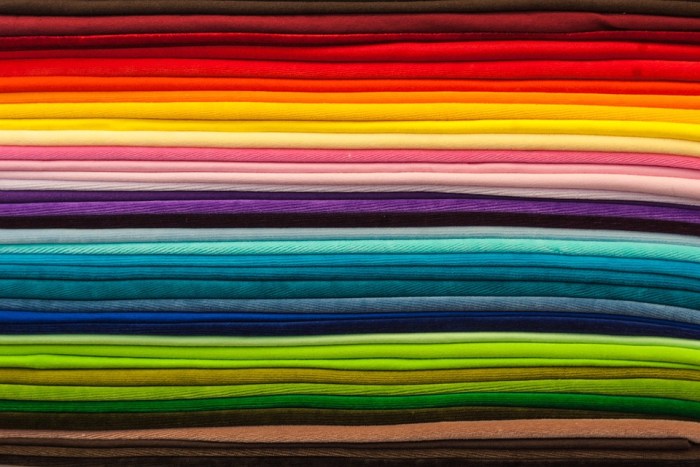
Textile Waste Management is an essential topic that dives into the challenges and solutions surrounding the fashion industry’s environmental footprint. As the world grapples with sustainability, understanding how to effectively manage textile waste can pave the way for innovative practices that benefit both the planet and society. This topic not only highlights the consequences of textile waste but also explores the proactive steps we can take to reduce it.
From optimizing recycling processes to engaging consumers in sustainable practices, there are numerous strategies to lessen the impact of textile waste. Moreover, this discussion sheds light on the employment opportunities emerging in this field, emphasizing the importance of training and innovation among companies dedicated to transforming textile waste into valuable resources.
Textile Waste Management Strategies
The fashion industry is one of the largest contributors to global waste, with millions of tons of textiles ending up in landfills each year. Effective textile waste management strategies are essential for reducing this environmental impact and promoting sustainability within the industry. By implementing innovative methods to reduce, reuse, and recycle textiles, the fashion sector can make strides toward a more sustainable future.
Methods for Reducing Textile Waste
To significantly cut down on textile waste, the fashion industry can adopt a variety of effective strategies. These strategies not only help in minimizing waste but also promote a culture of sustainability among consumers and manufacturers alike.
- Design for Longevity: Creating durable clothing with timeless designs encourages consumers to keep garments longer, reducing the frequency of purchases and disposal.
- On-Demand Production: Implementing on-demand manufacturing helps prevent overproduction, ensuring that only what is needed is made, thus minimizing excess inventory.
- Material Innovation: Using sustainable materials, such as organic cotton and recycled polyester, can reduce the environmental impact at the source, leading to less waste overall.
- Education and Awareness: Raising awareness among consumers about sustainable choices empowers them to make informed decisions that favor eco-friendly brands and products.
Optimizing Recycling Processes for Textile Materials
Recycling textiles can significantly reduce waste and enhance sustainability in the fashion industry. Optimizing recycling processes involves improving techniques for transforming used textiles into new products effectively.
- Mechanical Recycling: This process involves shredding textiles into fibers to create new fabrics. Innovations in machinery can enhance the efficiency of this process, allowing for higher quality recycled materials.
- Chemical Recycling: Utilizing chemical methods to break down polyester and other synthetic fibers can yield pure raw materials, which can then be re-spun into new textiles.
- Closed-Loop Recycling: Brands can implement systems where worn garments are collected, recycled, and transformed back into new garments, promoting a circular economy.
- Collaboration with Recycling Facilities: Partnering with specialized recycling companies can streamline the collection and processing of textile waste, ensuring better recycling rates and outcomes.
Role of Consumers in Promoting Sustainable Textile Practices
Consumers play a crucial role in the movement towards sustainable textile practices. Their choices can drive demand for sustainable products and influence brands to adopt more environmentally friendly practices.
- Conscious Consumerism: Choosing to purchase from brands that prioritize sustainability encourages more companies to adopt eco-friendly practices.
- Responsible Disposal: Donating or recycling clothing instead of discarding it in landfills contributes to reducing textile waste and supports a circular economy.
- Advocacy for Change: Engaging in discussions about sustainable fashion and advocating for policies that support sustainability can create a collective shift towards greener practices.
- Educating Others: Sharing knowledge about sustainable textile practices with friends and family can foster a greater community interest in responsible fashion choices.
“The future of fashion depends not just on manufacturers but also on consumers who advocate for sustainability and demand change.”
Employment Opportunities in Textile Waste Management

The textile industry is one of the largest contributors to waste globally, and as awareness of this issue grows, so do the employment opportunities within textile waste management. This field not only focuses on reducing waste but also promotes sustainable practices through recycling and upcycling textiles. Professionals in this area play a vital role in transforming how we think about textile disposal and reuse.A variety of job roles are emerging that prioritize recycling and upcycling textiles.
These positions require a mix of creativity, technical skills, and knowledge of sustainable practices. The following are key roles in this sector:
Job Roles in Textile Waste Management
Textile waste management offers a range of job opportunities catering to different skill sets and interests. Here are some prominent roles:
- Recycling Coordinator: Responsible for overseeing textile recycling programs, ensuring materials are processed correctly and efficiently.
- Upcycling Designer: Focuses on creating new products from discarded textiles, blending creativity with sustainability.
- Environmental Compliance Specialist: Ensures that textile waste management practices comply with environmental regulations and guidelines.
- Research Analyst: Conducts studies on textile waste and sustainable practices, providing data-driven insights to improve processes.
- Waste Management Consultant: Advises companies on best practices for reducing textile waste and implementing recycling programs.
The demand for skilled professionals in textile waste management is on the rise, leading to new training programs aimed at equipping individuals with the necessary knowledge and skills.
Training Programs in Textile Waste Management
To address the growing need for expertise in textile waste management, several training programs are available. These programs often combine theoretical knowledge with practical experience:
- Certificate in Sustainable Fashion: Offered by various institutions, this program covers topics such as eco-design, waste reduction, and ethical production practices.
- Textile Recycling Training: Focuses on techniques for recycling fabrics and materials, often including hands-on workshops.
- Fashion and Textile Technology Degrees: Many universities now offer specialized degrees that include modules on sustainability and waste management in the textile industry.
- Online Courses and Webinars: Platforms like Coursera and edX offer specialized courses on sustainable practices in fashion and textiles.
These training programs are essential in preparing the workforce for the challenges of managing textile waste, ensuring a better understanding of sustainable practices.
Leading Companies in Textile Waste Innovation
Several companies are at the forefront of textile waste management, pioneering innovations and implementing sustainable practices. These organizations are not only committed to reducing waste but are also actively looking to hire professionals passionate about sustainability:
- Patagonia: Known for its environmental ethics, Patagonia actively recruits individuals who are committed to sustainability and circular fashion practices.
- H&M Group: This global fashion retailer is investing heavily in recycling initiatives and often looks for talent in sustainable development roles.
- The North Face: With a focus on circular economy practices, they offer various job opportunities in their sustainability and recycling programs.
- Renewcell: A Swedish company that recycles textiles into new fibers, they frequently seek individuals with expertise in waste management and recycling technologies.
- Levi Strauss & Co: Their commitment to sustainable practices includes hiring for various roles aimed at reducing textile waste and reinventing the lifecycle of denim.
These companies showcase the potential for a fulfilling career in textile waste management, focusing on innovation, sustainability, and community impact. With the right skills and training, individuals can make a significant difference in this vital industry.
Impact of Textile Waste on Environment and Society

The accumulation of textile waste poses significant threats to both the environment and society. With the global fashion industry expanding at a rapid pace, the volume of discarded clothing continues to rise, resulting in severe repercussions. This section delves into the environmental effects of textile waste and its social implications, highlighting instances where communities have successfully implemented programs to tackle this growing issue.
Environmental Effects of Textile Waste Accumulation
The environmental impact of textile waste is profound, affecting land, water, and air. When textiles are dumped in landfills, they can take hundreds of years to decompose, contributing to soil degradation and habitat destruction. Synthetic fibers, in particular, release harmful chemicals as they break down, contaminating groundwater and harming local wildlife. Moreover, the production processes of textiles, which often accompany their disposal, generate substantial carbon emissions, exacerbating climate change.
-
Textile waste contributes to 10% of global greenhouse gas emissions annually.
- The dyeing and treatment of textiles use approximately 20,000 liters of water for every kilogram of fabric, leading to water scarcity in regions where water resources are already limited.
- Microplastics released from synthetic fabrics enter oceans and waterways, affecting marine life and ecosystems.
Social Implications of Poor Textile Waste Management Practices
Poor textile waste management has significant social consequences, particularly in vulnerable communities. The improper disposal of textiles can lead to health risks, as toxic substances seep into the environment. Furthermore, communities lacking proper waste management systems often witness the rise of informal waste-picking economies, where individuals work under hazardous conditions for minimal pay. This situation perpetuates poverty and social inequality.
- In regions with ineffective waste management, there is often a correlation with increased rates of respiratory and skin diseases among the local population.
- Informal waste pickers, who help reduce waste but lack job security, face social stigma and limited access to health care.
Community Programs Addressing Textile Waste Reduction
Several community programs have emerged globally to address the challenges posed by textile waste. These initiatives often focus on education, recycling, and upcycling to promote sustainability. For instance, the “Refashion” program in the UK encourages consumers to rethink their purchasing habits and promotes the use of second-hand clothing, resulting in a measurable reduction in textile waste.
- The “Wearable Collections” initiative in New York City has successfully diverted over 2 million pounds of clothing from landfills by encouraging donations and recycling.
- Community workshops, like those organized by the “Repair Café,” teach skills such as mending and altering clothing, fostering a culture of reuse and sustainability.
The engagement of communities in textile waste management not only aids in environmental preservation but also enhances social cohesion and provides educational opportunities, effectively addressing both environmental and societal challenges.
Conclusion
In conclusion, tackling Textile Waste Management is not just about reducing waste; it’s about creating a sustainable future where fashion can thrive without harming the environment. By adopting effective strategies, fostering community initiatives, and encouraging consumer responsibility, we can collectively make a significant impact. Let’s embrace the change and be part of the solution to a cleaner, greener world.
Commonly Asked Questions
What are the main methods for reducing textile waste?
Main methods include recycling, upcycling, donating, and implementing sustainable manufacturing practices.
How can consumers contribute to textile waste management?
Consumers can promote sustainable practices by choosing eco-friendly brands, donating unused clothing, and supporting recycling initiatives.
What job opportunities are available in textile waste management?
Job opportunities include roles in recycling facilities, upcycling businesses, and sustainability consulting, among others.
Are there training programs available for careers in this field?
Yes, many universities and organizations offer training programs and certifications focused on sustainable fashion and waste management.
What is the environmental impact of textile waste?
Textile waste contributes to pollution, greenhouse gas emissions, and depletion of natural resources, significantly harming ecosystems.





